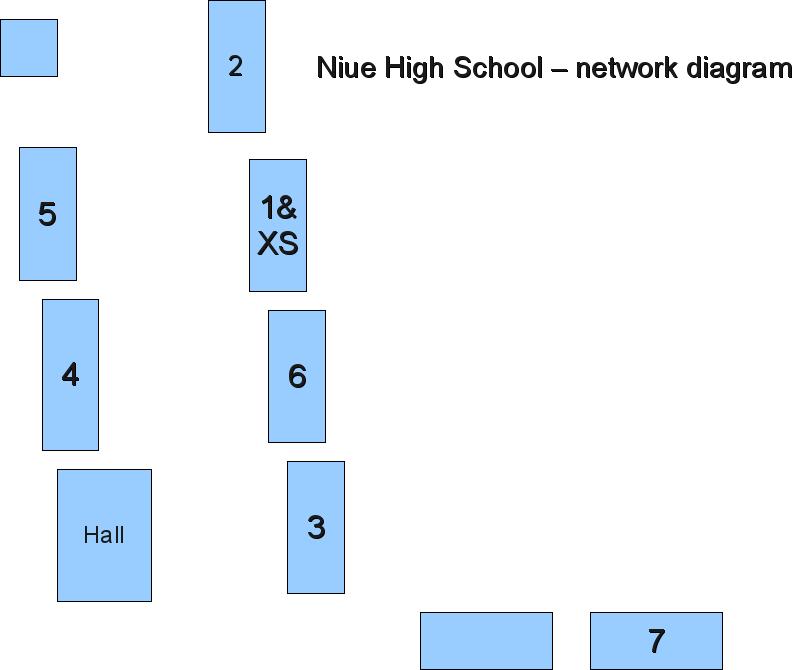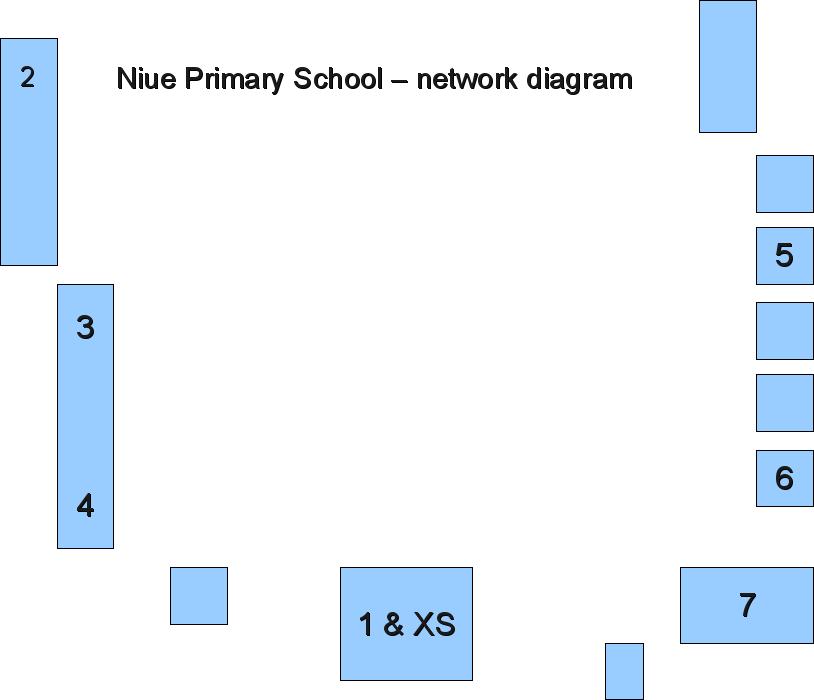OLPC Niue
Cook Islands -French Polynesia - Kiribati - Nauru - New Caledonia - Niue - Palau - Papua New Guinea - Samoa- Solomon Islands - Tonga - Tokelau - Tuvalu - Vanuatu
Deployments in Niue will commence in July 2008
Contacts:
- Ian Thomson, RICS Coordinator, Secretariat for the Pacific Community (SPC) SPC
- Niue Computer Society (Inc.) is very supportive of the idea NCS
- Pia Waugh, volunteer from Australia, rolled out the servers and wireless infrastructure with local assistance
A localisation project is being opened on the OLPC Pootle server for the Niuean language.
Deployment Goals
- Full knowledge transfer to locals (including full documentation on the wiki)
- 100% working network, server and laptops for all children in both schools
- Support mechanism for ongoing support to teachers and admins
Basic Timing
- 4th July - Ian to fly into Australia with 2 servers and transfer to John/Silvia
- 4th July - John and Silvia to arrive in Niue and setup wireless network and OLPC XS servers. To test with their own XOs. Also to document all work and if possible work with some locals for kowledge transfer and testing
- ~7th July - Pia and Ian to plan sustainability and support around Niue project. Pia/Ian to implement any needed components prior to the 25th
- 25th Pia, Ian and other volunteers to arrive, do teacher training and setup XOs
Training sessions
- Training sessions for teachers have been carried in both primary and secondary schools.
- Monday 28 July, both schools were closed. Primary and secondary school teachers gathered in the sport field of the secondary school. The school's director gave an introduction together with the Minister of Education. Ian Thompson gave an introduction that included the OLPC mission statement, principles, project overview and gave examples of other rollouts in Pacific countries. The training session included the following: journal, camera, tamtam (music), memorize, write, personal view and network view. Parts of this session can be viewed in the following video (Ian to provide link).
- Tuesday 29 July, each school (primary and secondary) had a two hours training session. The morning training session was at the secondary school. The training included the following: Chat, Browse, Write -sharing and joining documents-, E-toys, and Dolphin. The afternoon session was at the primary school. The training there included: Chat, Write -sharing and joining documents-, Ruler, and Flipsticks.
- Wednesday 30 July, there was a two hours training session on each school. The Wednesday session was focused on emphasising the areas of interest of each of the teachers. The morning session at the secondary school focused on: Browse with emphasis on searching of learning resources (School server resources, TKI, ESFS, Google images, NCEA courses), TamTam music, Write and Colors activities. The afternoon primary school session focused on Memorize and Write again, with emphasis on class delivery and having a teacher asking students to join documents for corrections. The Memorize activity focused on creating activities where teachers can match a picture, a sound, a question, with a word or an answer e.g.: it could be used to teach language, geography, etc.
- Thursday 31 July, there was a two hours training session at the secondary school. The training session focused on future enhancements that would integrate with OLPC. These enhancements will be made by another program of work to be implemented in the school which will make use of the application Moodle, that has been installed in the school server.
Infrastructure Set up
This documentation is provided by Pia Waugh who can be contacted at greebo [at] pipka [dot] org for more information.
Hardware
- Access Points
* Will use the WRT54GL v1.1 access points (provided by Pia and setup by John/Silvia) with WDS * Running DD-WRT v24
- Servers
* Provided by Ian
Documentation
There were two schools set up, the primary and secondary schools which have about 400 students all up, (200 at each school). Due to the number of students at each school I decided to use wireless access points and an XS server for connectivity at each school. There was effectively no wired (ethernet) network to all the classrooms and no ability to network more classrooms so we set up a WDS network, giving full wireless coverage at each school. The two schools were set up identically for ease of local support, and are not networked together at all, which was a design decision as we didn't feel there was any additional value (but additional risk) in connecting the high school and primary school.
Both sites have the following configuration:
The server is plugged into the normal school network, which gets a dhcp school address. The school networks have a Government provided DSL internet connection, which itself has all the required safety filtering required for the schools, so this was unnecessary on the XS machines. The other ethernet connection on the servers is plugged into the main access point at each site, this server connection has a 172.18.0.1 address, and the main access point has the address 172.18.100.1. All subsequent access points have a name and address incrementing from that (eg - 172.18.100.2 = nhs-ap2 and 172.18.100.3 = nhs-ap3). The WDS network essid is NHS-OLPC at the high school, and NPS-OLPC at the primary school. The main access point at each school has all MAC addresses for the client access points at that schools. Each client access point only has the main access point MAC address like so:
main-ap1 ___ ap2
|___ ap3
|___ ap4
If a classroom was too far away to get a strong enough signal (say 20%) to the main access point you can daisy chain aps, however implementers must be careful to not put a single MAC address in multiple access points, so if say ap5 had to daisy chain off ap4 to reach a distant classroom, then the ap5 MAC address would be removed from the main AP and put into ap4 (along with the main ap MAC), and ap5 would only have ap4's MAC address like so:
main-ap1 ___ ap2
|___ ap3
|___ ap4 ___ ap5
The main access point at each school provides DHCP for up to 230 XOs in each school at this point. In future the dhcp should be handled by the server.
The servers only provide minimum functionality:
- DHCP (currently unused)
- Web caching
- Jabber (messaging between the laptops)
- Moodle (elearning platform)
- Additional education resources (provided by David Leeming and linked from the http://schoolserver page which is the moodle frontpage
All infrastructure passwords lie with the ISO technical resources in Niue, who are the Government IT support group. The maintenance of the laptops themselves lie with an external contractor Richard,
Network maps
Both images were generated from openoffice draw, the source of which is here.
High school
Primary school
Tech todo
- To add another wireless AP to the high school to daisy chain 3 - 8 - 7 to reach the distant school rooms (as the signal strength in 7 isn't sufficient atm
- To add backup to the server when available
- To add wireless security when available - by end of August hopefully
- To move school server to seperate DSL to make managing by ISO easier (at Scan's suggestion)
Helpers
- Pia Waugh (OLPC Australia) - helping with volunteers, technical support, setting up peer to peer support and on the ground assistance. Going on the 25th July for a week. Confirmed.
- Grisel Carriera - going on 25th July with Pia and Ian for user/teacher training and such for a week. Confirmed.

